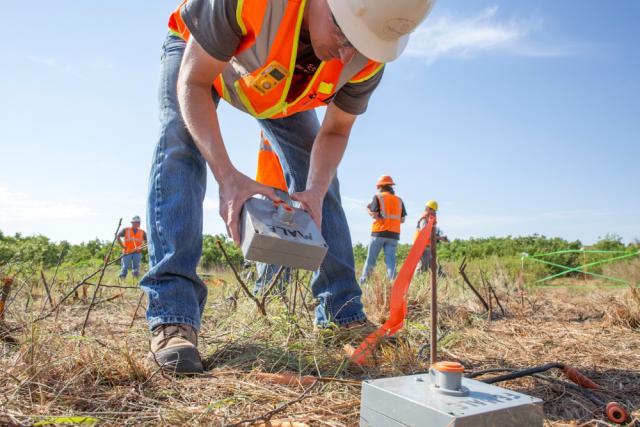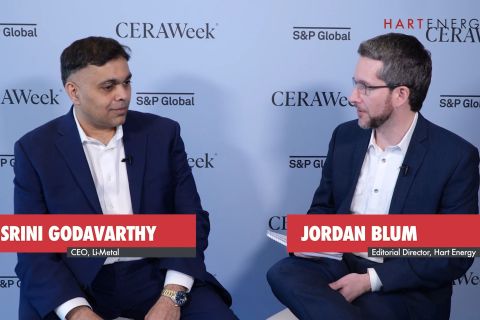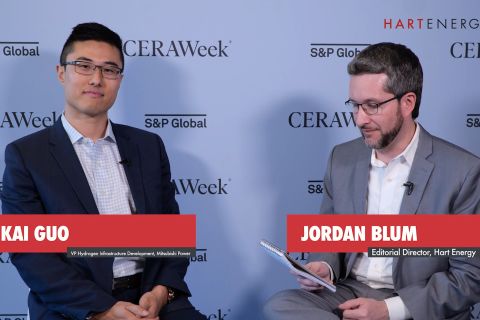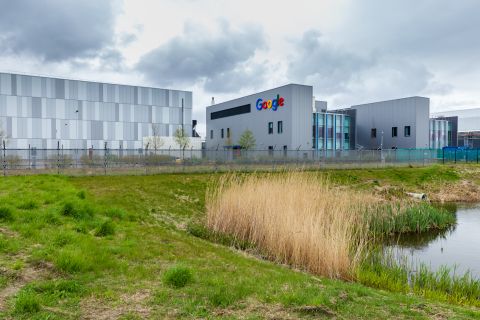
Deep Imaging Technologies uses an electromagnetic method to track fluid migration during hydraulic fracturing operations. (Source: Deep Imaging Technologies)
Deep Imaging Technologies CEO David Moore recalled a time when the company he heads was monitoring a well in Oklahoma using a 1,500-ft array for electromagnetic subsurface data collection.
“When we did the look back, we watched fluid flow out of the edge of our array and we saw it happen three times,” Moore told HartEnergy.com, describing three stages with frac hits. “And the [nearest] producing well was 2,600 ft away. They hit that well three times.”
The well was taken offline and brought back online a few months later, he explained, adding some things like Mother Nature and the heterogeneity of the rock subsurface can’t be controlled.
“Growing up my grandfather always told me control the controls,” Moore said. “So that’s the same thought process” behind the company’s real-time fluid tracking technology it plans to fully commercially launch by year-end. “We will be able to help the operators stop that or at least mitigate it to a point because that’s a lot of the heartache,” he said referring to problems typically encountered during well completions.
E&P companies, working with service companies, have tweaked completion recipes and stepped into full development mode, having gained knowledge on what techniques are working and what isn’t in U.S. shale plays. The learning curve, however, is still evolving.
Some operators have increasingly turned to technology to improve their ability to accurately see beneath the surface to address challenges such as potentially damaging frac hits as they drill long laterals, adjust spacing and determine the right volumes of proppant and fluid.
But the stakes to get it right are high with pressure mounting from investors demanding to see higher returns. Already, many E&Ps have slowed activity, focusing less on new production growth and more on return on investment.
Given the current oil and gas landscape, focus on fluid tracking and effectively stimulating rock—given well interference issues—has put companies like Deep Imaging Technologies in the spotlight.
The company said it uses an electromagnetic method to track fluid migration during hydraulic fracturing operations, identifying frac hits, bad cement, open zippers, plug failures and other surbsurface problems that can impact well performance.
An electrical array wide enough, and then some, to cover a lateral is placed on the surface. A transmitter line is placed directly over the lateral and an electrical current is injected into the ground, Moore explained. The technology doesn’t go subsurface at all—its receivers, coupled to the earth with grounding rounds—are on the surface.
“We put this electrical field into the subsurface. That electrical field is then moved by frac fluid and proppant being pushed into the formation,” Moore said. “It’s not the same as what’s already in that layer or in that formation.”
Changes are measured at the surface.
“It’s basically mapping subsurface in the X and Y where that fluid and proppant has gone,” Moore said. “If I’m an E&P company, it gives me a much better idea of how much rock I’m stimulating. Am I stimulating enough rock? Am I stimulating too much? Am I overlapping the stages? You can glean a lot of information off of that direct measurement.”
The electromagnetic piece of the technology has been around for a while, he said, but Deep Imaging patented a way to measure the signals utilizing companies’ subsurface antenna and casing to make the technology work.
“We’re averaging less than 1% equipment failure and more than 90% data capture on every single one of the jobs that we did in the last 18 months,” Moore said. “Our full effort is into making this as robust and beneficial to the customer as possible on the completion side.”
Completion Trends
Many companies are operating three- and four-well pads, but Deep Imaging has been asked to use its services on a pad with up to 16 wells.
“I think the trend is definitely a denser development, … stimulating as much of the rock as they can to increase production and to maximize the dollars that they’re putting into drilling, completion and production,” Moore said. “Everyone is so hard pressed to generate a return on investment, to generate free cash flow, to give back. Just having a play that has X amount of years or X amount of barrels in it isn’t enough anymore. It’s how much are we going to return to the investors.”
Tracking Fluids
Seeing the “patchwork” of fluid moving subsurface—pinpointing where it grows, contracts and ultimately ends up—enables operators to see interactions between wells, he added. It could help them gain insight on impacts in denser developments or interactions from stage to stage. It could help in determining whether to stop pumping at a certain stage because there’s a plug failure or perhaps fluid and proppant aren’t flowing to the right spots.
In some instances, E&Ps may even find that, “Some of the parent-child [well interference] is good because it pressures up an older well that wasn’t producing and may produce more,” Moore added. “It’s not all bad. … As we roll out our real-time product, we’ll be able to show an operator in the frac van what the fluid is doing, where it’s moving, how far out it’s going within a five-minute lag.”
Potential Savings
Such technologies could prove helpful in saving money during the completion process.
“Investors are really pushing all of these companies to return on investment,” Moore said. Companies that embrace science and technology can, in turn, show investors how they saved millions by not pumping all stages as planned because they saw something subsurface that changed plans, he said. “That [savings] goes either into the next piece of production or a piece of completion or it can be returned to the investors. Not only are you going to get more out of the well, you’re going to do it cheaper and start to, from an oilfield services standpoint, return cash to the investors. I think that pulls the market out of stagnation.”
Recommended Reading
Exclusive: Building Battery Value Chain is "Vital" to Energy Transition
2024-04-18 - Srini Godavarthy, the CEO of Li-Metal, breaks down the importance of scaling up battery production in North America and the traditional process of producing lithium anodes, in this Hart Energy Exclusive interview.
High Interest Rates a Headwind for the Energy Transition
2024-04-18 - Persistent high interest rates will make transitioning to a net zero global economy much harder and more costly, according to Wood Mackenzie Head of Economics Peter Martin.
Scotland Ditches 2030 Climate Target to Cut Emissions by 75%
2024-04-18 - Scotland was constrained by cuts to the capital funding it receives from the British government and an overall weakening of climate ambition by British Prime Minister Rishi Sunak, said Mairi McAllan, the net zero secretary for Scotland's devolved government.
Exclusive: Mitsubishi Power Plans Hydrogen for the Long Haul
2024-04-17 - Mitsubishi Power is looking at a "realistic timeline" as the company scales projects centered around the "versatile molecule," Kai Guo, the vice president of hydrogen infrastructure development for Mitsubishi Power, told Hart Energy's Jordan Blum at CERAWeek by S&P Global.
Google Exec: More Collaboration Needed for Clean Power
2024-04-17 - Tech giant Google has partnered with its peers and several renewable energy companies, including startups, to ramp up the presence of renewables on the grid.





